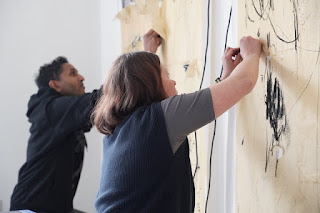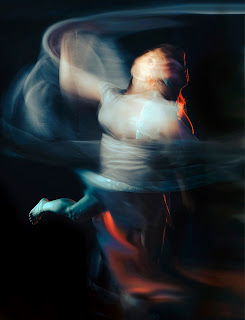Johann Don Daniel & others
I am writing in application to the Performance and self portrayal survey. I am writing also as 1 part of three people. JDD (me), Heini Marie King and Cyrus Hung. Below will explain the details of our performance, photography and themes. I am interested in the survey, its outcomes and how it can help develop the dialogue that has started between the three of us. The text below and image attached gives a basic outline as to what we are working on.
The name of the work, Parallel Play, refers to a stage in child developmental psychology where children play adjacent to each other but there’s no obvious interaction between them.
Use of the body:
The interpreters (artists) move at times in unison. As one follows the other by sound and some peripheral glimpses. At times they move on their own paths, catching up with one another again. The crouching, stretching, movement of the body is amplified literally through the sound and speed that varies. The leaders switch roles. The camera interplays, moving, crouching, distancing, observing.
[ ...
]
Relationship to the camera:
CH has been capturing aspects of our performance as his interpretation determines. This is an aspect of play that we have invited but do not directly interact with, continuing parallel play. The camera can be seen as a player as well as a recorder and also works in unison with his own performance.
CH was invited to our performative dialogue due to our understanding of ‘being aware’ of the camera. As he has taken on ’that’ role we are given more freedom to ‘ignore’ or furthermore concentrate without having to spend bandwidth detracting from ‘our’ focus.
The performative aspect:
We have our back to an audience. As one leads the other moves. The sound bridging communication. It can be interpreted that as the sound and dialogue based thoughts circulate, the interpreters (artists) make marks part determined by the factors. The camera moves in out and around. Playing with the space, vision and interpretation of the dialogue. Adding perhaps hidden meanings or emphasis. The performative result is sound, movement, marks, colour and what can appear as a trance like dance.
I feel that the project that you have outlined very much ties in with our research project. If there is a way for us to collaborate with you in the future please feel free to get in touch.




The inclusion of the photographer. moving from a reportage role into the animated space, begins to open up the question of who is in the whole space of the performance. The camera will affect the dynamic and [presumably] sonic environment which may have problems maintaining its original position as a driver of the other artists drawing interaction
ReplyDeleteDuring life drawing session, when you are focusing on a fixed spot and not moving for periods of time, you become super-aware of the sounds of drawing, scratching, rubbing, scribbling. It might be interesting if the photographer could capture your movement but not the marks, or record the just sounds but not the output.
ReplyDelete